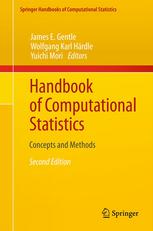

Most ebook files are in PDF format, so you can easily read them using various software such as Foxit Reader or directly on the Google Chrome browser.
Some ebook files are released by publishers in other formats such as .awz, .mobi, .epub, .fb2, etc. You may need to install specific software to read these formats on mobile/PC, such as Calibre.
Please read the tutorial at this link: https://ebookbell.com/faq
We offer FREE conversion to the popular formats you request; however, this may take some time. Therefore, right after payment, please email us, and we will try to provide the service as quickly as possible.
For some exceptional file formats or broken links (if any), please refrain from opening any disputes. Instead, email us first, and we will try to assist within a maximum of 6 hours.
EbookBell Team

4.3
28 reviewsThe Handbook of Computational Statistics - Concepts and Methods (second edition) is a revision of the first edition published in 2004, and contains additional comments and updated information on the existing chapters, as well as three new chapters addressing recent work in the field of computational statistics. This new edition is divided into 4 parts in the same way as the first edition. It begins with "How Computational Statistics became the backbone of modern data science" (Ch.1): an overview of the field of Computational Statistics, how it emerged as a separate discipline, and how its own development mirrored that of hardware and software, including a discussion of current active research. The second part (Chs. 2 - 15) presents several topics in the supporting field of statistical computing. Emphasis is placed on the need for fast and accurate numerical algorithms, and some of the basic methodologies for transformation, database handling, high-dimensional data and graphics treatment are discussed. The third part (Chs. 16 - 33) focuses on statistical methodology. Special attention is given to smoothing, iterative procedures, simulation and visualization of multivariate data. Lastly, a set of selected applications (Chs. 34 - 38) like Bioinformatics, Medical Imaging, Finance, Econometrics and Network Intrusion Detection highlight the usefulness of computational statistics in real-world applications.